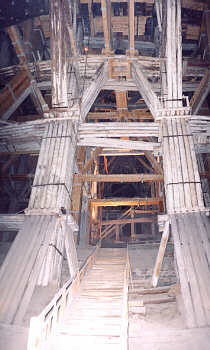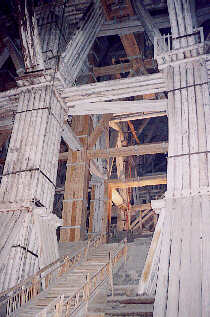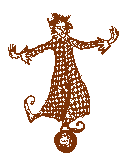 |
More!- Wieliczka Salt Mine, Poland - |
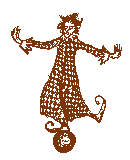 |
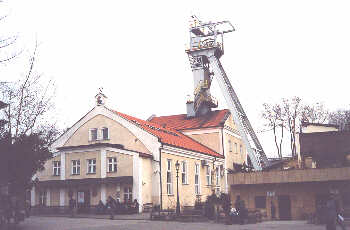
The Wieliczka salt mine is unique; it is the only site in the world where mining has been continuous since the middle ages - the site has been mined for over 700 years. The mine has nine working floors; the first at 64 metres below ground and the ninth at 327 metres. There are over 250 Km of galleries.
The standard tourist route descends to floor three at -135 metres and includes about 3% of total length of the galleries.
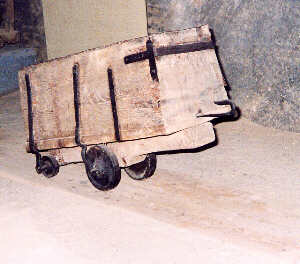 For those who are interested in wooden railways (and who isn't?), there are several Hunds on display. These are waggons that run on a twin plankway, (usually) being constrained by a iron pin (the Leitnagel) which runs in a groove between the two planks. A very clever design, the large wheels under the approximate centre of gravity of the truck makes it very manoeuvrable. Compare this with Agricola's illustration and description, below:-
For those who are interested in wooden railways (and who isn't?), there are several Hunds on display. These are waggons that run on a twin plankway, (usually) being constrained by a iron pin (the Leitnagel) which runs in a groove between the two planks. A very clever design, the large wheels under the approximate centre of gravity of the truck makes it very manoeuvrable. Compare this with Agricola's illustration and description, below:-
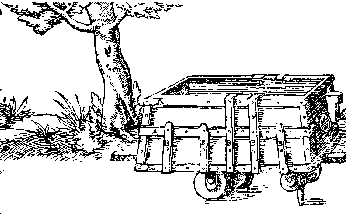 "The open truck has a capacity half as large again as a wheelbarrow; it is about four feet long and about two and a half feet wide and deep; and since its shape is rectangular, it is bound together with three rectangular iron bands, and besides these there are iron straps on all sides. Two small iron axles are fixed to the bottom, around the ends of which wooden rollers revolve on either side. In order that the rollers shall not fall off the immovable axles, there are small iron keys. A large blunt pin fixed to the bottom of the truck runs in a groove of a plank in such a way that the truck does not leave the beaten track. Holding the back part with his hands, the carrier pushes out the truck laden with the excavated material, and pushes it back again empty. Some people call it a "dog" † , because when it moves it makes a noise which seems not unlike the bark of a dog.
"The open truck has a capacity half as large again as a wheelbarrow; it is about four feet long and about two and a half feet wide and deep; and since its shape is rectangular, it is bound together with three rectangular iron bands, and besides these there are iron straps on all sides. Two small iron axles are fixed to the bottom, around the ends of which wooden rollers revolve on either side. In order that the rollers shall not fall off the immovable axles, there are small iron keys. A large blunt pin fixed to the bottom of the truck runs in a groove of a plank in such a way that the truck does not leave the beaten track. Holding the back part with his hands, the carrier pushes out the truck laden with the excavated material, and pushes it back again empty. Some people call it a "dog" † , because when it moves it makes a noise which seems not unlike the bark of a dog.
__________________
† Canis in Latin. The Germans in Agricola's time called a truck a hundt - "a hound."
Agricola - De Re Metallica (Dover Publications, 1950 - a translation from the first Latin edition of 1556)
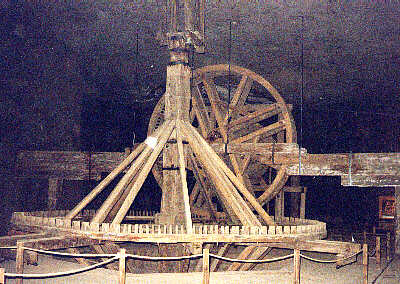
An underground horse gin - view from the rear showing the gin circle.
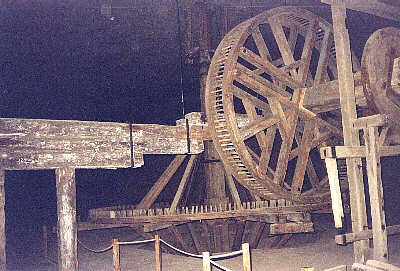
The gearing - roughly 1:1
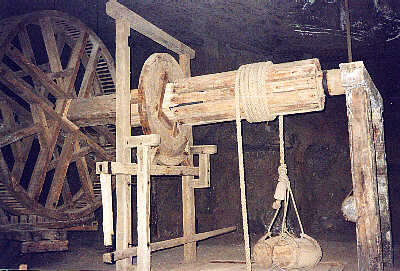
The same gin - the brake mechanism and the haulage drum over the shaft.
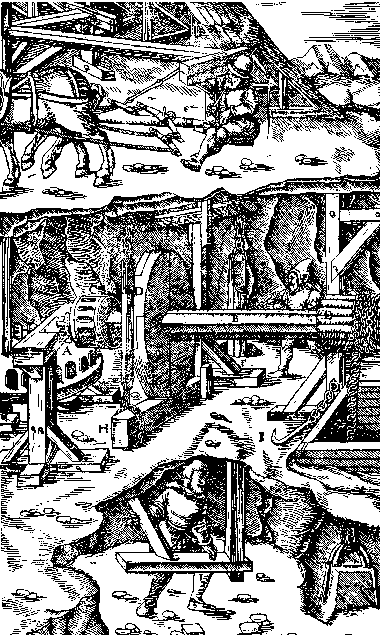
Agricola illustrates the same sort of device, the only difference being that his version operates on three levels and the gearing ratio is different
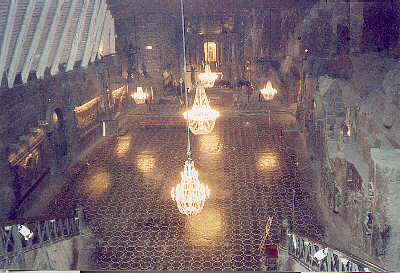
The old miners were deeply religious and held services before starting work. They made chapels underground which were richly decorated with wooden carvings. In 1697 a fire started in one of these chapels and a subsequent royal commission forbade the use of inflammable materials in the underground chapels. This resulted in the tradition of rock salt sculpture which has continued for three hundred years and for which the mine is famous. The largest example is the chapel of St Kinga. This is 101 metres underground and was started in 1896; it is 10 metres high, 15 metres wide and some 54 metres long. All the fittings and statuary are carved from salt.
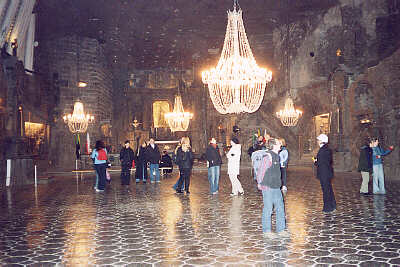
Visitors in St Kinga's chapel. The chandeliers are made from salt crystals and the salt floor is carved so that it appears to be tiled.
 |
 |
Created: 23-Jun-2007
Revised:
